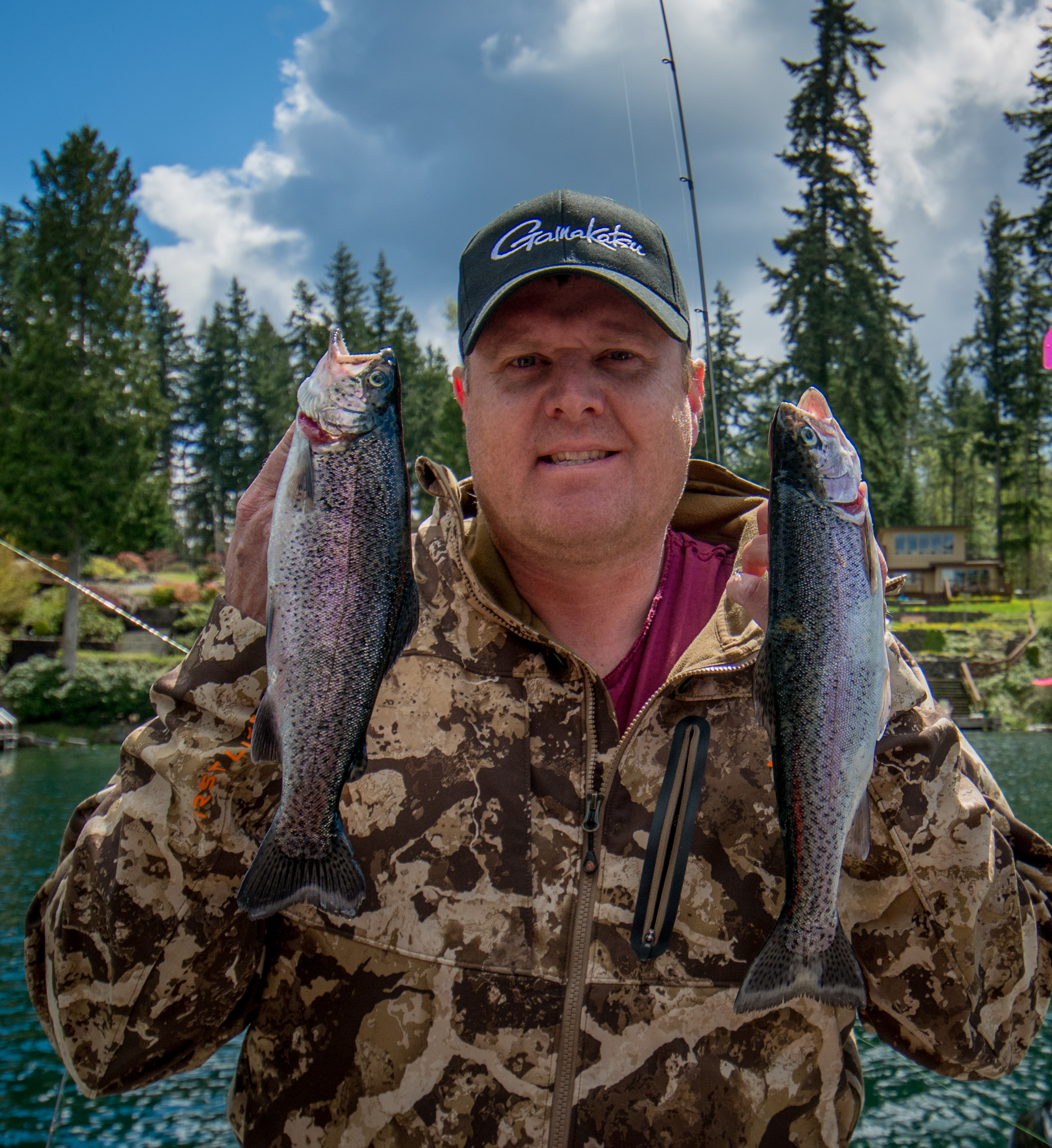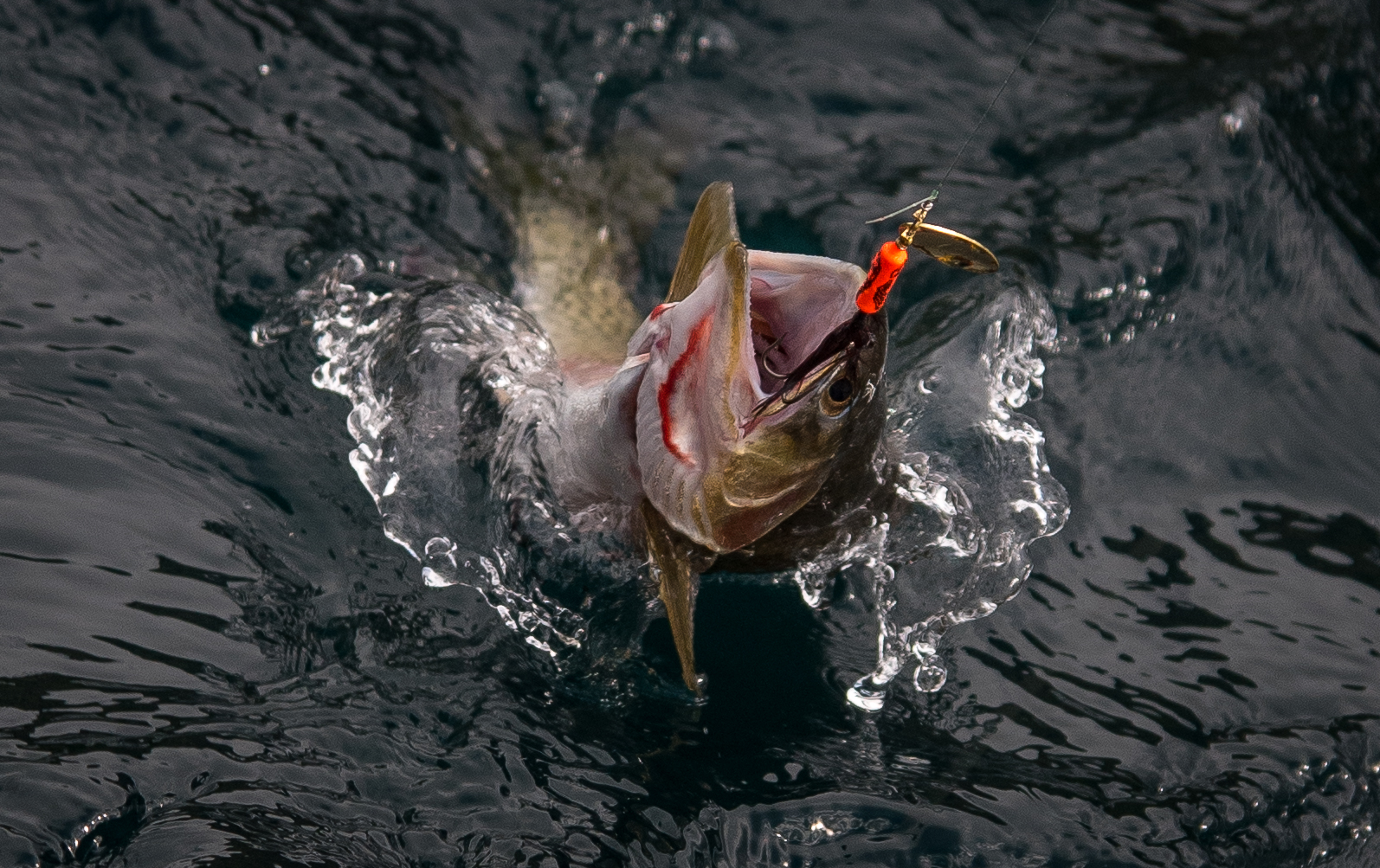Search
Latest Articles
Springtime Trout Tactics
by Jason Brooks, April 05, 2020
Knowing which lakes were recently planted and with how many fish is a good start to increasing your catching. This is easy to check as your state’s Department of Fish and Game, Natural Resources, or the agency that is in charge of fish stocking will have recent fish plantings posted on their website. Some agencies also publish a calendar for projected fish plants so you can make future plans for additional waterways. For example, Idaho Fish and Game breaks down their planting schedule by region where Washington Department of Fish and Wildlife show them by county. You can also look up specific waters to see when the most recent plants occurred as well as access fishing regulations.
When it comes to catching trout knowing how the fish react to water conditions will help decide on which technique to use. If a cold front is approaching and the water temperatures are cooler than normal, then bait is a good option. If water temperatures are normal, then that means cool mornings and warmer afternoons. A good bug hatch will be occurring and using emergers for the fly angler will bring in both carryover trout and the new planter fish that are learning to feed on natural food sources. These conditions are also great for trolling as the fish are very active. If the water heats up then the bite often goes off. Timing your trip to early morning will provide the best opportunities to catch trout as well as it puts less stress on the fish. Leave the afternoons for other activities unless you plan on keeping the fish since releasing stressed trout into warm waters with low oxygen often leads to mortality.
For the bait angler it is hard to beat the standard Power Bait by Berkley. This is a floating bait so it is best fished off of the bottom. I prefer the Power Eggs as they tend to stay on the hook better and float higher, plus they are less messy. If you notice others around you catching more fish or having a steady bite then be sure to ask how long the leader they are using is. We often ask what bait is being used but it could come down to your set-up. Most lakes have a decent weed cover on the bottom and even early in the trout season the weeds can hide your bait from fish. Start by tying a two-foot leader with a size 8 or 10 Gamakatsu baitholder hook. You can utilize some of the new leader boards by Fish-Eng, a company out of Oregon, and have several pre-tied leaders at various length. I have used up to six-foot leaders to get above the weeds. The smaller baitholder hooks will help you catch more fish but it also leads to fish swallowing the hook. It is much quicker to open the swivel clasp and remove the leader and retrieve your hook later in the day while cleaning fish. Simply switch out the leader, re-bait and cast back out.
Buzz Ramsey, brand manager for Yakima Bait Company, started using Lil’ Corkies to help get the bait off of the bottom of the lake as well as reduce the amount of bait needed. By using a small corky just below the hook you can add color and a larger profile to the offering. It also can help with keeping the hook from being swallowed which makes for an easier transition from hook to stringer and back out fishing again. Another tip is to fill the hole in the corky where the line is running through with Power Bait as well as putting the bait on the hook, or you can fill the hole with your favorite Pro-Cure Super Sauce scent. That way if the trout steals all of the bait you can still get bites from the corky and scent.
Be sure to use a sliding weight system when fishing bait off of the bottom of the lake. This allows the fish to grab the bait and start to swim away without it feeling the weight and the bite will telegraph to your rod tip much easier. Another tip is to use a bright colored line, such as Izorline XXX 10-pound monofilament in bright yellow for a mainline. Leave a little slack in the line and you can watch the bite occur as the line starts to pull tight. This also helps if the wind comes up and the boat turns just a little bit. If you have your lines too tight the movement can drag your bait through the weeds where it becomes entangled and the fish won’t bite. This also works for the shore bound angler as the fish can’t feel the resistance of the line and rod.
If the lake is full of weeds or you see a lot of fish rising then use a bobber set-up. A slip float, just like the ones often used for steelhead fishing in a river, is a great way to fish for trout. Rig it sliding with the bobber stop set to a depth you want to fish. An in-line weight or a simple sliding “egg” weight with a swivel ends the mainline. Then you can tie a standard leader and use a sinking bait such as single salmon eggs and cooked salad shrimp, or you can use a different set-up for floating baits. The weight will be at the very bottom of the leader and use a three-way swivel and tie a leader off of it to a hook. You can even use another three-way swivel part way down the leader and add a second hook, just make sure the leaders are so long that they can tangle with each other. Another way to tie this set up is to join two leader lines using a surgeon’s knot and then use the tag end of the top leader to tie on a hook. This eliminates the three-way swivel but if you hook into a big triploid or carry over fish then know that the knot is the weakest link in this set-up. By using the weight on the bottom you can use floating baits but again be sure to either use a stiff leader to the hook or short enough leaders that they don’t tangle with each other if the bait comes off of the top hook.
Trolling is one of my favorite ways to catch trout because it is relaxing and you are always doing something. The mundane cast and wait for a bite can get a bit boring but trolling means you are searching for the fish. A good sonar unit can help with finding the thermocline in the lake which is where the warm water on top and the cold water on the bottom meet. Trout can be temperature finicky so depending on how warm the top layer is and how cold the bottom layer is will determine where the fish are. As you search for fish you are constantly looking for the on the sonar, and looking for other telltale signs of fish such as flat benches, coves, benches or places there the fish just like to be. After fishing along the shoreline for a while I decided to trade sides of the lake and instead of pulling gear and heading over I decided to troll to the far side. In the middle of the lake the rod went off and I caught a fish. Making a circle trolling pattern we caught more fish. I have no idea why there were there but they were and we caught them. Trout mostly eat aquatic bugs and will feed where the bugs are present. Kokanee are plankton eaters and it is common to find them suspended in deep water. But trout will eat emergers and other bugs and wind can play a role in pushing water around and can push them to the middle of the lake. The point is that you are always searching for fish when trolling and this is what makes it so fun.
Small spoons and spinners are both productive and fun to fish with. A lightweight rod and the fight of a trout on a spinner, such as a Rooster Tail by Yakima Bait is a thrill. But don’t overlook “gang trolls” such at the Flash Lite by Mack’s Lure. These Mylar bladed trolling rigs can be pulled along at very slow speeds and a wedding ring spinner tipped with a piece of worm is a sure bet to catch fish. I often use this set up, either with a downrigger or with a ½ ounce banana weight in front, to find trout. Once I locate them I like to switch it up to a light rod and a lure since these fish are not that big. Don’t overlook trolling a whooly bugger or a smile blade fly, again my Mack’s Lure on a fast action spinning rod. A few split shot a foot or two in front helps keep the flies down where the fish will bite and troll at a very slow speed.
Fly anglers, or anyone wanting to try fly fishing should be very excited about the recent trout plants. Not only are they easy to catch but the fish are often found in the top water column on the surface of the lake for a few weeks after planting. This is because the fish are used to being in a holding tank and their food comes from above. So when a bug hatch occurs the fish are already on top of the lake. This means dry flies and there is hardly anything more exciting than a dry fly bite. Small flies such as duns, adams, and mosquitos are great flies to try in springtime. But if there is one fly to use for carryover trout it would be an emerger such as a chironomid. These tiny wet flies are often fished with a small strike indicator or on a dropper from a dry fly. They mimic bugs emerging from the mud and shallow muddy flats are the best places to use them. Big trout gorge on the bugs as they cruise along and you will be surprised at how many fish you will catch on such a small fly.
Springtime is trout time and it is a great way to get outside. Be sure to take a young angler or even an older one, as we need to share the experiences of the outdoors. Less youth are taking to the fields and streams and the older generations are slowly stopping as well. Stocker trout is an easy way to get people into fishing and it is a lot of fun. Get outside and enjoy our Northwest spring.
Jason Brooks hails from North-Central Washington. The son of a fishing guide, Jason is an avid hunter, angler, outdoor photographer and published writer. He resides in Puyallup with his wife and two boys.


